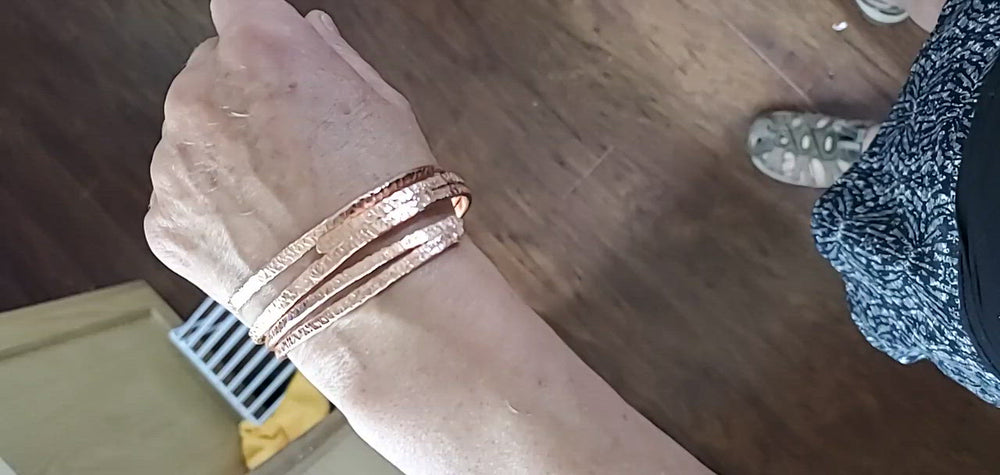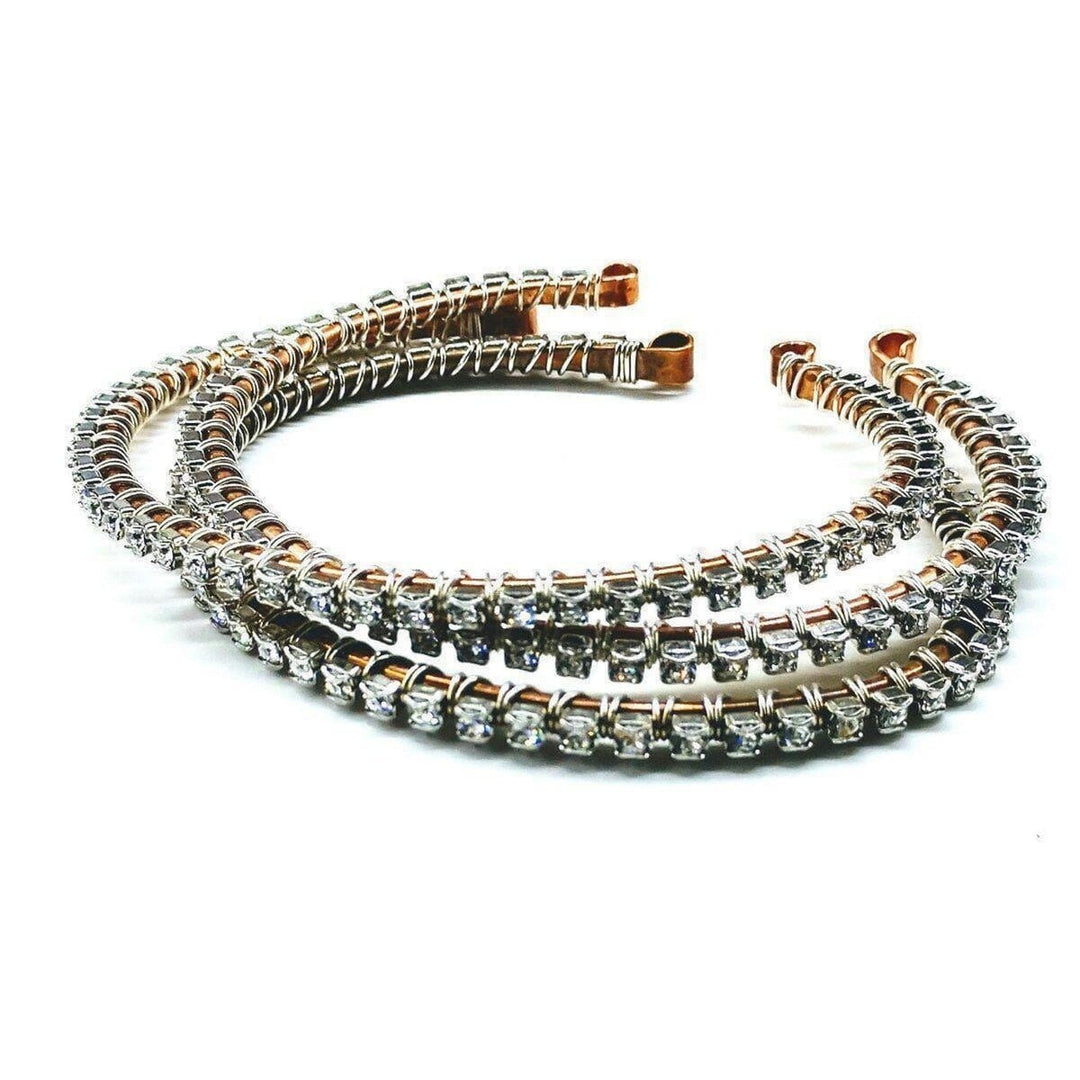The Benefits of Copper Jewelry: Beyond Aesthetic Appeal
For centuries, copper jewelry has captivated humans for its aesthetic appeal and potential health benefits. While most of us may associate copper primarily with its warm, reddish glow, this versatile metal also provides a plethora of benefits that range from enhancing one's style to potentially boosting well-being.
In this article, we'll delve deep into the rich tapestry of copper jewelry, exploring its foundational role in the body, its multifaceted health benefits, and the broader implications of wearing this ancient metal.
Table of Contents
- The Role of Copper in the Body and Jewelry
- Historical and Cultural Importance of Copper Jewelry
- Health Benefits of Wearing Copper Jewelry
- Expert Opinions and Studies on Copper and Health
- Practical Tips on Choosing Copper Jewelry
- Potential Risks and Considerations
The Role of Copper in the Body and Jewelry
Copper plays an indispensable role in the human body, acting as a vital trace element essential for various physiological functions. It contributes to the formation of red blood cells, supports connective tissue development, and aids enzymes responsible for energy production and nerve function.

Researchers from Healthline emphasize its importance by suggesting, "Copper is essential for building red blood cells, bone, and enzymes. The recommended daily intake is about 900 mcg, with increased needs during pregnancy or breastfeeding."
In the realm of jewelry, copper is celebrated not only for its beautiful sheen and robust physical properties but also for its purported health benefits. The concept of copper jewelry providing health benefits is rooted in both its essential role within the body and its historical application as a therapeutic tool across various civilizations.
Historical and Cultural Importance of Copper Jewelry
The allure of copper as a material for jewelry dates back thousands of years. Ancient Egyptians, Greeks, and Romans valued copper for its aesthetic beauty and therapeutic properties.

It was believed that wearing copper could harness the metal's healing properties, acting as a conduit for physical and spiritual well-being.
This historical context elevates copper jewelry beyond mere fashion accessory, embedding it in a rich cultural tapestry that speaks to its enduring legacy.
Health Benefits of Wearing Copper Jewelry
This section explores the diverse health benefits of copper jewelry, focusing on its purported impact on cardiovascular health, joint pain, and the immune system.

Supporting Cardiovascular Health and Combating Joint Pain
Copper jewelry is celebrated in certain circles for its non-invasive approach to supplementing the body with the essential mineral.
According to Copper-Living, "Copper bracelets can provide non-invasive and inexpensive supplementation of iron, which helps with iron deficiency and anemia. They also support cardiovascular health by promoting elasticity in blood vessels and reducing inflammation."
Wearing copper jewelry is conceivable as a supplemental practice, potentially alleviating conditions like joint pain and arthritis.
Immune System Support and the Power of Belief
While there is some skepticism regarding the direct health benefits of wearing copper bracelets, many individuals report improved well-being, which some attribute to a powerful placebo effect.
Medical News Today highlights that, "There is no strong evidence that copper bracelets help with arthritis. However, some people report pain relief, which could be due to the placebo effect."
This effect underscores the holistic potential of copper, where the perception of benefit can manifest genuine physical wellness.
Expert Opinions and Studies on Copper and Health
Insights from scientific research and health experts provide a skeptical yet hopeful perspective on copper jewelry's therapeutic claims. MedicineNet underscores that while, "Copper is essential for iron utilization, nerve function, and energy production, there is no scientific evidence that wearing copper bracelets provides health benefits."
Despite scientific ambivalence, the persistent popularity of copper jewelry suggests something beyond empirical evidence may be at play, perhaps embedded in the historical and symbolic weight of the jewelry itself.
Potential Risks and Considerations
While copper jewelry is generally safe to wear, it is essential to be aware of potential skin sensitivities and discoloration. Some individuals may experience skin greening, which is a harmless reaction between the metal and skin.
However, if irritation occurs, reducing wear time and consulting with professionals can mitigate any discomfort. Additionally, ensuring the quality and components of the jewelry are fundamental in preventing adverse reactions.
Wrapping Up the Charm of Copper Jewelry
In conclusion, copper jewelry is elegantly straddling a line between age-old tradition and contemporary wellness trends. Its esteemed role in history, coupled with the captivating benefits its proponents herald, promotes copper jewelry as a subject deserving of attention.
As we dissect the relationships between copper, human health, and cultural history, it's evident that the allure of this metal is multifaceted. While scientific studies may show mixed results regarding the efficacy of copper as a health aid when worn, the psychological and cultural beliefs surrounding it sustain its popularity.
PubMed notes, "A study on the therapeutic value of copper bracelets showed that they may have some therapeutic value, although the results were not conclusive."
However, in a world where personal belief and holistic practices continue to gain traction, the subjective experiences reported by copper jewelry wearers could hold their weight in gold—or, rather, copper.
From the sparkling collections available to the therapeutic promises hinted at by enthusiasts, copper jewelry remains a valuable accessory both for its aesthetic and its deeply-rooted cultural lore. Wear it not only as a means of embellishment but also as a possible bridge connecting past traditions with present-day exploration of wellness.
















Leave a comment